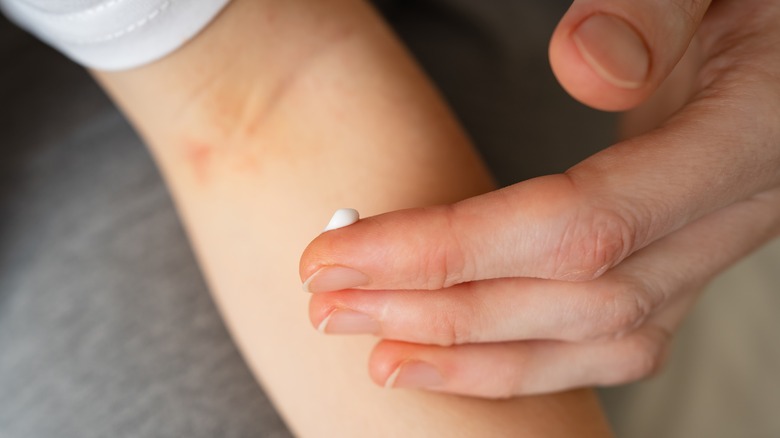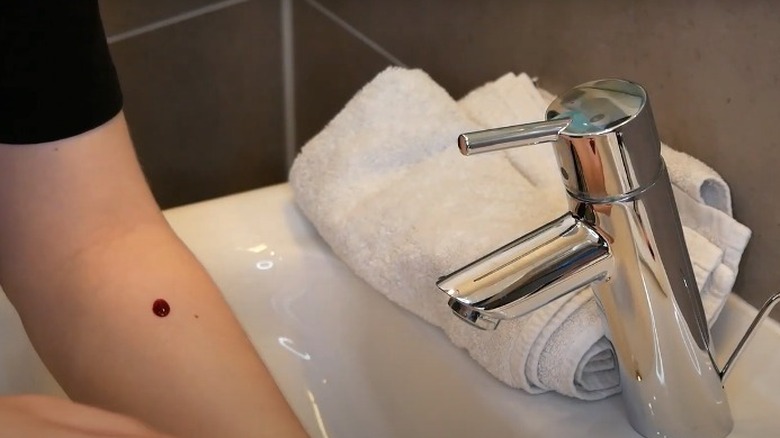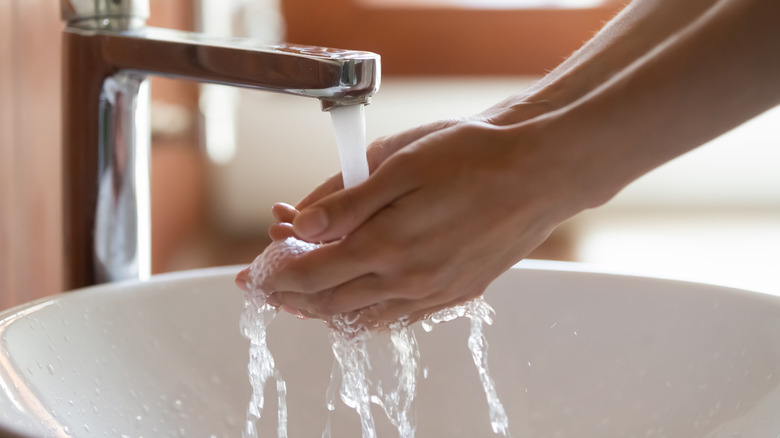How To Properly Patch Test Your Skincare Products
You've just picked up your new product delivery and you can't wait to try it. Your favorite YouTube influencer swore on everything she loves that it will work wonders for your skin, so you unbox it immediately and rip the seal off. Without bothering to read the label or ingredients, you slather the product on your face, cross your fingers, and hope for the best.
Before using any new product, experts agree that you should conduct a patch test first. Just as the name entails, you are testing out the product in a small-scale way before dumping the entire thing on your body or face. Patch tests are done to make sure that you aren't affected negatively by any of the ingredients in the product. Some people have allergies to certain common substances that they don't even know about, and physical contact can lead to irritation, rashes, or breakouts.
Although patch tests are standard practice, a lot of people bypass them in a rush for a quick fix, only to regret it later when their skin issue is exacerbated by an allergic reaction. In order to save yourself the potential heartache, you need to know how to conduct a proper patch test.
The proper way to do a patch test
Patch tests require a bit of patience, which is why a lot of people prefer to skip them altogether. Some people rub the product on a patch of skin, leave it for 15 to 30 minutes and conclude that it must be safe. This isn't a proper patch test and also defeats the purpose.
The American Academy of Dermatology Association (AAD) listed out the steps to conducting a proper patch test. First, apply the product on an inconspicuous piece of skin that won't be interfered with during your daily activities, somewhere like under your arm or inside your elbow. It is recommended to apply the product in the same amount and thickness as you would during a normal application.
Next, leave the product on for as long as advised on the label, as you normally would if you were using the product on your face or skin. Repeat this entire process twice daily for seven to 10 days. If you notice any sign of an allergic reaction, redness, soreness, itchiness, or irritation, discontinue the product. If you don't notice anything, then congratulations. You're officially in the clear.
If your patch test fails, wash the product off and apply petroleum jelly
When conducting a patch test, keep in mind that discretion is needed. Obviously, some products such as direct acids notably cause some irritation as part of their side effects. This effect may be heightened if you have sensitive skin but is a normal reaction. If you feel like it's getting out of hand, however, wash off the product ASAP.
If during your test you do develop reactions, do the same thing. Wash off the product and apply some petroleum jelly to your skin to soothe the area. If that doesn't work, the American Academy of Dermatology Association advises you to check in with your dermatologist. Patch tests aren't even always done on branded products. Some people throw together DIY face masks featuring household items like eggs, mayo, vinegar, and avocado, and don't test them out on their skin before using them. If you belong to the sensitive skin category, then you can choose to use hypoallergenic products instead. This doesn't exempt you from patch tests, though.
Although patch tests are standard practice, a lot of people bypass it in a rush for a quick fix, and some don't even know how to properly carry out the test in the first place. Now you know how to properly perform a patch test.


